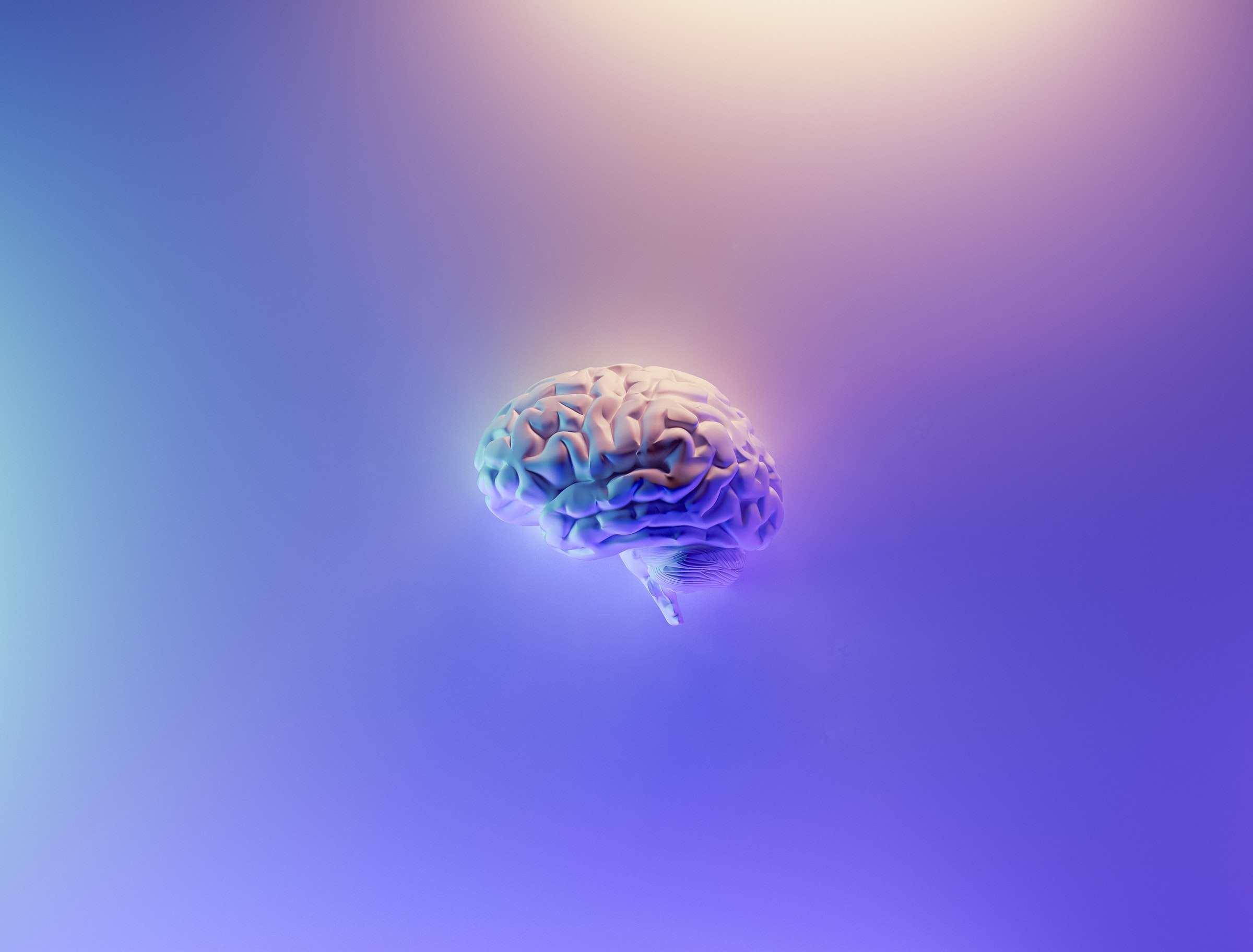The Role Of Brain Iron In ADHD And Age-Related Cognitive Decline

Table of Contents
Iron's Crucial Role in Brain Function
Iron is an essential mineral, and its presence in the brain is far from incidental. It plays a multifaceted role in supporting optimal cognitive function.
Iron's involvement in neurotransmitter production: Neurotransmitters, the chemical messengers of the brain, are vital for communication between neurons. Iron is a critical cofactor in the synthesis of several key neurotransmitters, including dopamine and norepinephrine.
- Dopamine's role in reward, motivation, and attention: Dopamine is crucial for attention, focus, and motivation. Inadequate dopamine levels are implicated in ADHD and other cognitive disorders.
- Norepinephrine's role in alertness, arousal, and focus: Norepinephrine is involved in regulating alertness, arousal, and cognitive function. Deficiencies can impair focus and attention.
- Iron's impact on the synthesis pathways of these neurotransmitters: Iron's involvement in the enzymatic pathways that produce dopamine and norepinephrine makes it a pivotal player in maintaining optimal neurotransmission.
Iron's impact on brain structure and development: Beyond neurotransmitter production, iron supports the structural integrity and development of the brain.
- Myelin sheath formation and its role in efficient neural transmission: Myelin, a fatty substance that insulates nerve fibers, is crucial for rapid and efficient neural transmission. Iron plays a critical role in myelin formation.
- Synaptic plasticity and its importance for learning and memory: Synaptic plasticity, the ability of synapses (connections between neurons) to strengthen or weaken over time, is essential for learning and memory. Iron is necessary for this dynamic process.
- Iron's role in neuronal growth and differentiation: Iron is essential for the growth, development, and differentiation of neurons during brain development.
Brain Iron Dysregulation in ADHD
The connection between brain iron and ADHD is an active area of research.
Iron deficiency and ADHD symptoms: Studies suggest a potential link between iron deficiency and the core symptoms of ADHD, including inattention, hyperactivity, and impulsivity.
- Studies demonstrating the prevalence of iron deficiency in children with ADHD: Several studies have shown a higher prevalence of iron deficiency among children diagnosed with ADHD compared to their neurotypical peers.
- Correlation between iron levels and ADHD symptom severity: Research indicates a correlation between iron levels and the severity of ADHD symptoms, suggesting that iron deficiency may exacerbate symptoms.
- Potential mechanisms linking iron deficiency to ADHD symptomatology: Iron deficiency may impair dopamine and norepinephrine synthesis, leading to the cognitive deficits characteristic of ADHD.
Iron overload and its potential impact: While iron deficiency is a concern, iron overload can also negatively impact brain function.
- Oxidative stress and its role in neuronal damage: Excessive iron can contribute to oxidative stress, damaging neurons and impairing cognitive function.
- The impact of iron overload on dopamine and norepinephrine pathways: Iron overload can disrupt the delicate balance of dopamine and norepinephrine pathways, potentially worsening ADHD symptoms.
- Research exploring the relationship between iron overload and ADHD: Ongoing research is investigating the complex relationship between iron overload and ADHD.
Brain Iron and Age-Related Cognitive Decline
As we age, the accumulation of iron in the brain becomes a significant concern.
Iron accumulation and neurodegeneration: Excess iron can contribute to oxidative stress and neurodegeneration, processes implicated in age-related cognitive decline and neurodegenerative diseases like Alzheimer's and Parkinson's disease.
- The role of iron in the formation of amyloid plaques and neurofibrillary tangles: Iron is believed to play a role in the formation of amyloid plaques and neurofibrillary tangles, hallmarks of Alzheimer's disease.
- Oxidative stress and its contribution to neuronal damage and death: Iron-induced oxidative stress contributes to neuronal damage and death, accelerating cognitive decline.
- Research findings supporting the link between brain iron levels and cognitive decline: Numerous studies support a link between elevated brain iron levels and increased risk of cognitive decline and dementia.
Strategies for managing brain iron levels in aging: Maintaining healthy brain iron levels is crucial for healthy aging.
- Dietary modifications to regulate iron intake: A balanced diet can help regulate iron intake, preventing both deficiency and overload.
- The role of antioxidants in mitigating iron-induced oxidative stress: Antioxidants can help mitigate the harmful effects of iron-induced oxidative stress.
- Potential therapeutic interventions to manage iron levels: In some cases, therapeutic interventions may be necessary to manage iron levels and prevent harmful accumulation.
Conclusion:
The role of brain iron in cognitive function is undeniable. Maintaining optimal brain iron levels is critical for both children with ADHD and older adults seeking to preserve cognitive health. Iron deficiency can impair neurotransmitter production and brain development, potentially exacerbating ADHD symptoms. Conversely, iron overload can contribute to oxidative stress and neurodegeneration, accelerating age-related cognitive decline. Understanding the intricate relationship between brain iron and cognitive function opens doors to developing effective strategies for managing ADHD and age-related cognitive decline. Learn more about optimizing your brain iron levels for improved cognitive health by consulting your doctor about brain iron and its impact on your specific situation. Don't hesitate to discuss your concerns regarding brain iron and ADHD or age-related cognitive decline with your healthcare provider.

Featured Posts
-
 Papal Conclave Convicted Cardinals Voting Rights Under Scrutiny
Apr 29, 2025
Papal Conclave Convicted Cardinals Voting Rights Under Scrutiny
Apr 29, 2025 -
 20 000 Strong The Trans Rights Protest That Made Headlines
Apr 29, 2025
20 000 Strong The Trans Rights Protest That Made Headlines
Apr 29, 2025 -
 67 Killed In Plane Crash Investigation Reveals Black Hawk Pilots Fatal Mistakes
Apr 29, 2025
67 Killed In Plane Crash Investigation Reveals Black Hawk Pilots Fatal Mistakes
Apr 29, 2025 -
 Porsche 356 Jejak Sejarah Dari Pabrik Zuffenhausen Jerman
Apr 29, 2025
Porsche 356 Jejak Sejarah Dari Pabrik Zuffenhausen Jerman
Apr 29, 2025 -
 Europe On Edge Analyzing Recent Russian Military Movements
Apr 29, 2025
Europe On Edge Analyzing Recent Russian Military Movements
Apr 29, 2025
Latest Posts
-
 Trump Country Reels From Federal Funding Cuts
Apr 30, 2025
Trump Country Reels From Federal Funding Cuts
Apr 30, 2025 -
 Summer Slides 2025 A Fashionable And Functional Guide
Apr 30, 2025
Summer Slides 2025 A Fashionable And Functional Guide
Apr 30, 2025 -
 Richmond Man Sentenced For Hiding Gun Near Nephew
Apr 30, 2025
Richmond Man Sentenced For Hiding Gun Near Nephew
Apr 30, 2025 -
 Federal Funding Cuts Devastating Trump Country
Apr 30, 2025
Federal Funding Cuts Devastating Trump Country
Apr 30, 2025 -
 Destination Nebraska Act New Path Proposed For Gretnas Rod Yates Mega Project
Apr 30, 2025
Destination Nebraska Act New Path Proposed For Gretnas Rod Yates Mega Project
Apr 30, 2025
